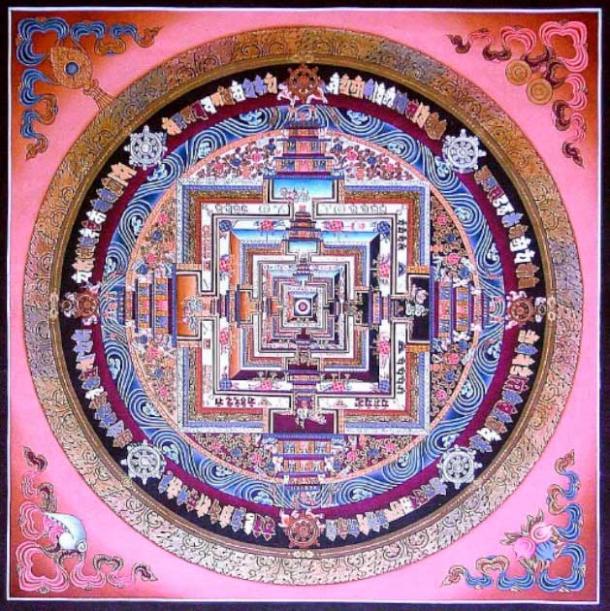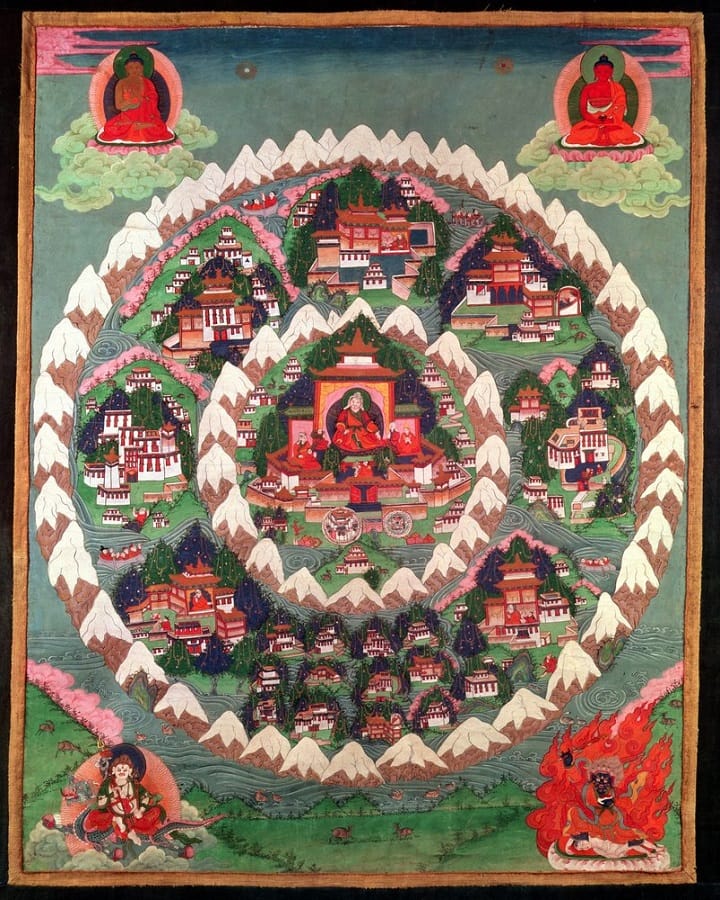
Image Credit – Hema
Throughout history, myths and legends have attracted the attention of powerful leaders, secret societies, and empires. One of the most fascinating and controversial topics in this area is the Nazi connection with Shambhala and Tibet. The Nazis were not only focused on political dominance and military conquest but also deeply interested in the occult, hidden knowledge, and ancient myths. Among their most mysterious pursuits was the belief in Shambhala, a legendary kingdom hidden somewhere in Central Asia, often associated with Tibet.
The Nazi Connection with Shambhala and Tibet—Mysteries of Occult Expeditions

Shambhala—The Mythical Kingdom
Shambhala is a mystical land described in Buddhist traditions, particularly in Tibetan texts. It is believed to be a hidden paradise where wisdom, peace, and spiritual knowledge thrive. According to ancient legends, Shambhala is ruled by enlightened kings who will one day return to restore balance to the world. For Tibetans, Shambhala is symbolic of inner enlightenment, but for the Nazis, it represented something more literal – a hidden civilization with powerful secrets.
Why the Nazis Were Interested in Shambhala
The Nazi ideology was influenced by occult philosophies, Aryan supremacy myths, and pseudo-scientific theories about “ancient races.” Heinrich Himmler, one of the leading figures of the SS, believed that the roots of the Aryan race could be traced to the Himalayas. Shambhala, in this context, was seen not just as a spiritual place but as a potential real-world location holding secrets of ancient wisdom and lost technologies.
The Nazis formed the Ahnenerbe, an organization dedicated to researching the origins of the Aryan race and uncovering esoteric knowledge. Under its banner, expeditions were sent across the globe – and Tibet became one of their prime destinations.
The 1938–39 Nazi Tibet Expedition
One of the clearest examples of the Nazi connection with Shambhala and Tibet was the expedition led by Ernst Schäfer in 1938–39. Officially, the mission was presented as a scientific expedition focusing on zoology, geography, and ethnography. However, behind the scenes, the SS and Himmler hoped the mission would uncover hidden wisdom, prove the Aryan link to Tibet, and possibly establish contact with secret spiritual leaders.
Tibetan lamas and monasteries were believed to safeguard ancient texts, rituals, and knowledge that could potentially benefit the Nazi cause. Some reports even suggest the Nazis were looking for hidden entrances to Shambhala or Agartha, another mythical subterranean world.
Occult Symbolism and Tibet
During their stay in Tibet, the Nazi team collected artifacts, skulls, and cultural objects. They were obsessed with racial measurements and compared Tibetan features with their theories of Aryan descent. The swastika, an ancient spiritual symbol in Tibetan Buddhism, also fascinated the Nazis. They adopted it as their emblem, twisting its spiritual meaning into a symbol of their ideology.
Many historians argue that the Nazis projected their myths and racial theories onto Tibetan traditions, misinterpreting spiritual metaphors as physical realities. What Tibetans understood as symbolic journeys, the Nazis interpreted as geographical mysteries waiting to be solved.
Myths, Rumors, and Conspiracies
After World War II, stories spread that Nazi soldiers and SS members had established secret bases in Tibet or discovered passages to Shambhala. Some even claim that hidden Tibetan masters guided Nazi leaders through esoteric practices. While much of this remains speculative, these tales fueled post-war conspiracy theories linking the Third Reich to occult powers and hidden civilizations.
The blending of fact, myth, and speculation is what makes the Nazi connection with Shambhala and Tibet such an enduring subject. On one hand, there is documented evidence of the German expedition to Tibet. On the other hand, the supposed discovery of mystical knowledge remains part of legend.
The Legacy of the Nazi-Tibet Mysteries
Today, researchers, historians, and enthusiasts still debate the true extent of Nazi interest in Tibet and Shambhala. Some see it as a desperate attempt to legitimize racial theories with exotic myths, while others argue it was a genuine search for occult wisdom. Either way, this episode highlights how myths and spirituality can be distorted when used for political or ideological purposes.
The story of the Nazi connection with Shambhala and Tibet continues to fascinate because it combines history, mystery, and myth. While the Nazis’ actual findings in Tibet were far less spectacular than their ambitions, their obsession with Shambhala reveals the extent to which occultism influenced their worldview. For Tibetans, Shambhala remains a symbol of inner awakening and ultimate wisdom. For the Nazis, however, it became another tool in their misguided quest for power.
The blending of myth and history ensures that this chapter will continue to intrigue readers, researchers, and explorers for generations to come.

Leave a Reply
You must be logged in to post a comment.